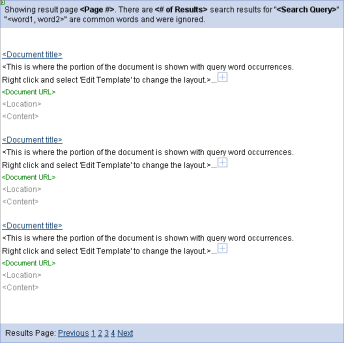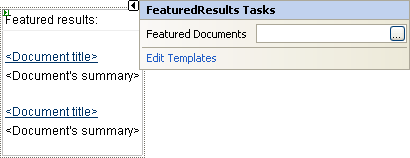
SearchBox Control

SearchResult Control


The two controls, SearchBox and SearchResult form the basis of SearchUnit, SearchBox receives the user's search query and redirects it to the page containing SearchResult. At runtime SearchResult performs the search and displays the results, at designtime it supplies tools for building and managing the document index.
To be able to perform searches on a web-site the SearchResult control should be added to a webform, this page will be called on to show the results. The SearchBox control is added to a web-form and it's ResultPageURL property is set to the URL of the page holding SearchResult. This links the two together. The SearchResult control uses a directory to store it's index files. The index files are what enables the search to be so fast, even over millions of words in hundreds of documents. The index files directory is specified in the SearchResult.IndexDirectory property (this should be readable by the ASP.NET process).
With the controls set up and configured the web-site can be crawled by the spider and indexed, using the Index Management tool, accessible from the SearchResult control at design-time.
SearchResult Members of NoteHeaderTemplate, FooterTemplate, ResultItemTemplate, NoResultsTemplate, ErrorMessageTemplate and NoQueryTemplate
Used to specify appearance of the resultsIndexDirectory
Where the index files will be storedHighlightQueryWordsInSummary
Whether to highlight query words in the result summariesNumberOfResultsPerPage
The number of results to show per page
 |
The FeaturedResults control provides a simple way to add a 'featured results' section to the search results header. Typically, featured results are pages which are most important and should be hard-wired to be shown on certain keyword matches, they usually are product pages, purchase pages, help pages etc.